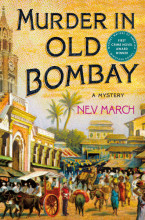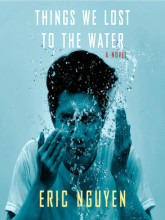Autumn Wetli-Staneluis
Library Blogs
Showing 491 - 500 of 1968 items

June is Pride Month! Check out some of the LGBTQA+ books in the Library's OverDrive Collection.

U-M Library’s universal header is the light gray bar at the top of the library website and Library Search that aims to help people recognize that they’re on a U-M Library website, and links to our different sites and services through the “Explore” menu. In the fall of 2020, the Design System Team conducted remote usability testing that helped us to understand people’s experiences and identify opportunities for improvement.

Over the next couple of months, I’m going to post some recent additions to the Library’s OverDrive Collection. Enjoy some casual summer reading with these fiction titles.

This blog post reflects on the work of students to explore the collection-related needs of undergraduate students, through surveys and interviews.

The University of Michigan is offering a rich variety of game-related courses during the Summer and Fall 2021 terms, so we thought we'd highlight them here as well as on our research guide as you're choosing courses. If you're looking for ideas on how to play games online, we'd recommend taking a look at the Online Games page on our research guide.

Murder in Old Bombay is the first in a new mystery series by Nev March, set in colonial India in 1892. The main character, Captain Jim Agnihotri, is a wounded Anglo-Indian army officer who learns about the murder of two women from a prominent family while he is recovering in the hospital and reading the newspapers. After leaving the hospital, Jim uses the techniques of his hero, Sherlock Holmes, to help the family find the murderer. Along the way, he falls in love with the daughter of the family, even though their marriage is forbidden because of their differences in race and caste. Jim's investigation takes him all over India, and you learn many details about life in India in the late 19th century.

In celebration of Asian Pacific American Heritage Month, check out contemporary Asian American writing available through the Library's OverDrive Collection.

Turner Classic Movies (TCM) in conjunction with HBO Max will present Dogfight (1991), directed by Nancy Savoca, as part of its annual film festival this month. Savoca, whose papers were donated to the University of Michigan, is part of the library's Screen Arts Maverick & Makers collection.

Check out these books, which inspired the Oscar winners and nominees of the same title!

One Fatal Flaw is a mystery/courtroom drama set in 1910 London, featuring young lawyer Daniel Pitt and his friend, forensic scientist Miriam fford Croft. Daniel defends a young man accused of arson and murder, and wins his case based on the expert testimony of Miriam's former teacher, Saltram. But when his client is murdered in the same way as the previous victim, Daniel realizes his expert witness was wrong, and this leads him to reopen the 20-year-old case that made Saltram's reputation. In doing so, he gains a powerful enemy.